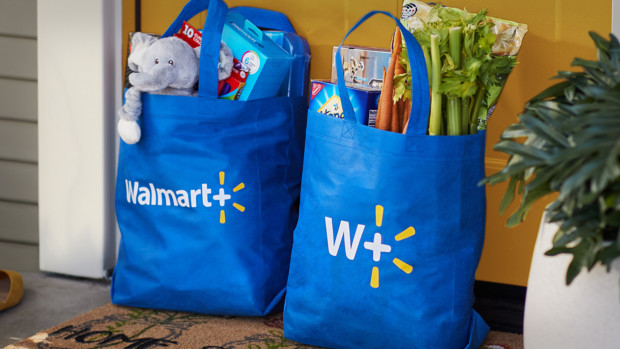
The biggest players in the grocery space essentially operate on a level playing field. Walmart, Costco, and Kroger -- plus perhaps Publix, which has a large footprint in the south -- all have enormous buying power.
That allows them to get the best prices from vendors and pass those on to customers. Each chain, of course, makes choices. Costco (COST) -), for example, uses its limited product choice to push orders for the items it does stock even higher, giving it added leverage.
DON'T MISS: Walmart copies one of Costco's most popular features
For the most part, however, all of these companies are really big and they have the leverage to get the best prices possible. As we saw during the covid pandemic, there are a lot of factors that go into pricing.
Supply chain concerns, labor costs, and even weather can drive prices up or down. That's an ongoing problem and it has led to Walmart CEO Doug McMillon sharing some sobering news during his company's first-quarter earnings call.

Image source: Walmart
Walmart CEO Has a Price Warning
McMillon's message was not all bleak. He did have some good news mixed in with the bad.
"In Walmart U.S., general merchandise costs are now lower than a year ago, which is great, but they're still higher than two years ago on like items," he shared.
The CEO shared that some categories have remained stubbornly high even as other areas have shown more improvement.
"In the dry grocery and consumables categories like paper goods, we continue to see high single-digit to low double-digit cost inflation. We all need those prices to come down," he shared. "The persistently high rates of inflation in these categories lasting for such a long period of time are weighing on some of the families we serve."
The CEO believes that higher prices in the grocery space also impact customers' budgeting. Basically, if people don't know what their grocery bill will be, not to mention fluctuating gas prices, they may be more conservative in other areas.
"This stubborn inflation in dry grocery and consumables is one of the key factors creating uncertainty for us in the back half of the year because of the cumulative impact on discretionary spending and other categories, specifically general merchandise," he added.
Walmart Has Focused On Grocery
While some people order groceries for same-day delivery and curbside pickup, a lot of people still want to shop for food in stores. There's no digital way to look at produce or see which meat or fish looks good that day, so the chain sees an opportunity to use groceries to drive store visits.
That strategy has been working, according to McMillon.
"We continue to gain market share in the grocery category, including with higher income and younger shoppers, and we saw good growth in membership income in both businesses," he said.
The company's growth in grocery includes its Sam's Club brand.
"At Sam's Club U.S., member count and Plus member penetration hit all-time highs in the quarter. Our growth is now being driven by convenience in addition to price. We see it across formats and income and age cohorts," he shared.
CFO John David Rainey also noted that even with prices being higher than they were two years ago, Walmart's pricing power has helped it continue to add grocery customers.
"Share gains in grocery continued, including from higher-income households, as our strong price gaps resonate with customers who are increasingly prioritizing value and convenience," he said.







